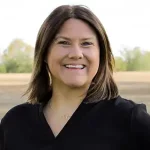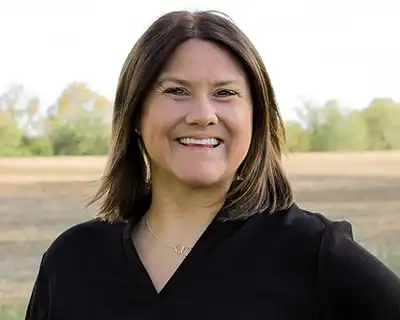Farm Hard Field Day explores how cover crops, reduced tillage and testing can help producers reach their land’s potential for banking nutrients and capturing and holding water.
The 2023 Soil Regen Farm Hard Field Day in Cotton Plant, Ark., opened with a mind-blowing idea.
“The only thing different here is in your mind,” USDA-NRCS District Conservationist Keith Scoggins said at the beginning of the field day. “When you get your mind right, you start farming with the soil and not against it.”

On the top of most minds in attendance that day was likely rain — both the lack of it in most parts of the U.S. and the amount that had fallen in the state the night before the event. How was grower Adam Chappell getting the most out of that rain?
According to Chappell and the other presenters of the day, his focus on soil health on his farm gave him an advantage. It’s the same advantage that grower and Trust In Food Senior Vice President Jimmy Emmons, himself a regenerative farmer and advocate for soil health, has seen for his farm and ranch. “Once I started improving my soil, I stopped getting just a quarter inch of rain [infiltration] or a tenth like my neighbors. Now, when they ask how much rain I got, I can say that I got all of it,” Emmons said.
During the presentations throughout the day Soil Regen soil health scientist Dr. Liz Haney, her husband, soil scientist Dr. Rick Haney, Scoggins, Chappell, Emmons and others, shared best practices for maintaining the type of soil on farms that put regenerative practices to work for yield, profitability and sustainability.
Here were some key take-aways:
Cover Crops Are Key: In fact, Scoggins said they were so critical to soil health that he’d rank them higher in priority than no-till. “I’d rather see someone use covers and till than no-till without covers.” According to Dr. Liz Haney, growers should think of soil as a bank account, with the top layer being a checking account and the bottom layers savings account. She says by using cover crops, Chappell and other regenerative growers are adding to the nutrients (or investments) into their savings accounts at a much higher rate than their checking accounts are diminishing. She called cover crops a multi-generational wealth of nutrients being added consistently to the soil savings account.
Emmons says these investments into the soil pay back dividends in providing nutrients that conventional growers have to pay to supplement. “There’s just no sense in buying nutrients when the soil can give them to you for free,” he said.

allow growers like Chappell to protect soil
health during the growing season.
Cover Crops Are a Science: In one of Chappell’s fields, attendees were surprised to see that he’d sewn his soybean crop into a dense cover crop. When planning this move, Chappell said he carefully considered which cover crops would provide the most benefit to his soil under the ground and on top of it. Chappell told growers to not negate plant architecture in the equation, both for the cash crop and the cover crop, always ensuring that one plant in a cover crop mixture is large enough to shield the canopy well. The plants that act as a shield will keep both plants and soil biology from drying out. When he measured his soil temperature, Chappell noted a seven-degree difference in his soil and the ambient air temperature.
Know Your Numbers: Emmons noted for the growers and researchers in attendance that perhaps the most crucial number to know when considering soil health is water infiltration rate, showing attendees how to perform a simple water infiltration test. The test is simple, but refreshers can be found through NRCS resources here and here.
Soil health is critical to regenerative practices for growers, and full-scale adoption of proper soil health practices requires a thoughtful approach and a phased plan. America’s Conservation Ag Movement can help by providing resources and connections to USDA-NRCS support and funding opportunities for soil health improvements.



